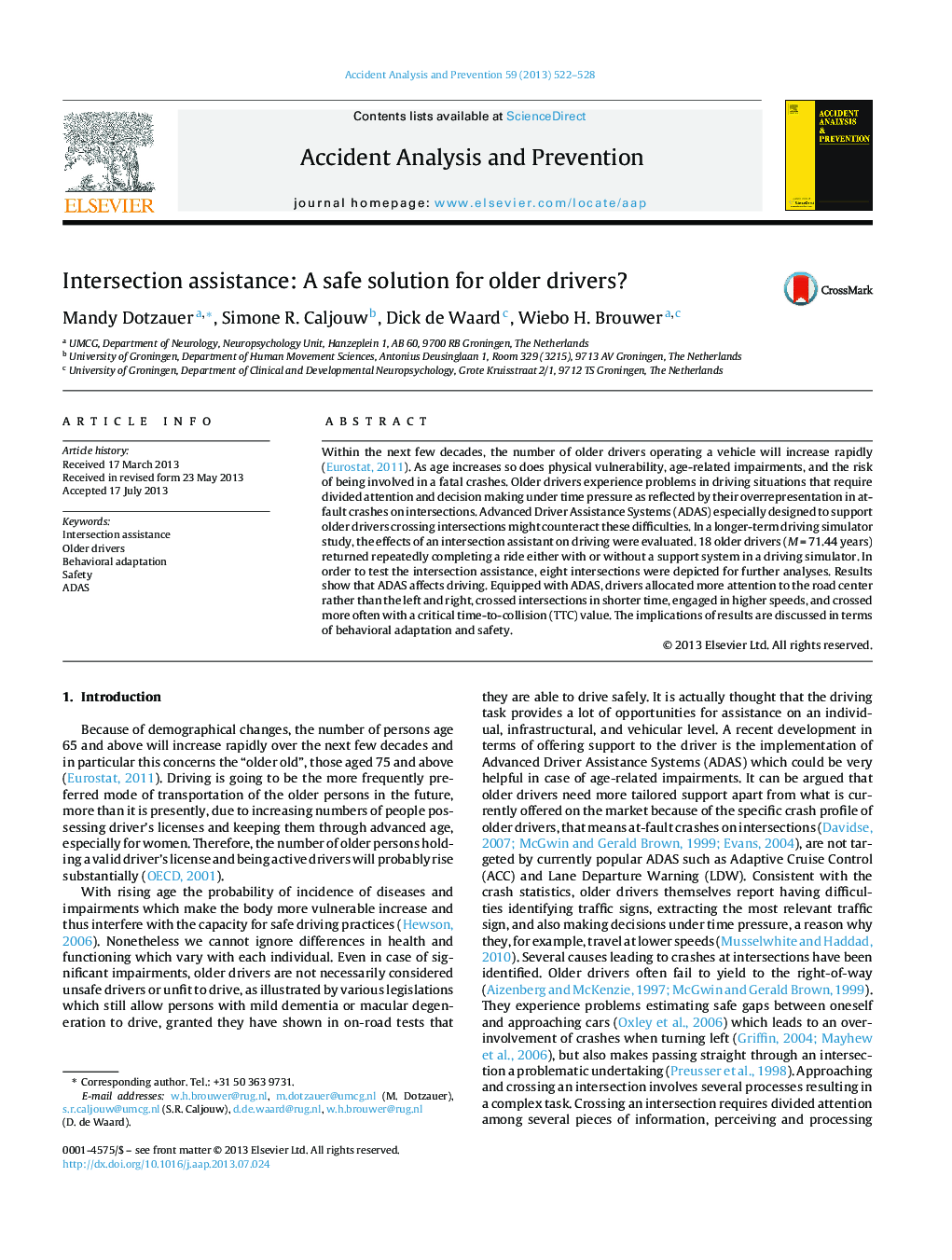| Article ID | Journal | Published Year | Pages | File Type |
|---|---|---|---|---|
| 6966281 | Accident Analysis & Prevention | 2013 | 7 Pages |
Abstract
Within the next few decades, the number of older drivers operating a vehicle will increase rapidly (Eurostat, 2011). As age increases so does physical vulnerability, age-related impairments, and the risk of being involved in a fatal crashes. Older drivers experience problems in driving situations that require divided attention and decision making under time pressure as reflected by their overrepresentation in at-fault crashes on intersections. Advanced Driver Assistance Systems (ADAS) especially designed to support older drivers crossing intersections might counteract these difficulties. In a longer-term driving simulator study, the effects of an intersection assistant on driving were evaluated. 18 older drivers (MÂ =Â 71.44 years) returned repeatedly completing a ride either with or without a support system in a driving simulator. In order to test the intersection assistance, eight intersections were depicted for further analyses. Results show that ADAS affects driving. Equipped with ADAS, drivers allocated more attention to the road center rather than the left and right, crossed intersections in shorter time, engaged in higher speeds, and crossed more often with a critical time-to-collision (TTC) value. The implications of results are discussed in terms of behavioral adaptation and safety.
Related Topics
Physical Sciences and Engineering
Chemical Engineering
Chemical Health and Safety
Authors
Mandy Dotzauer, Simone R. Caljouw, Dick de Waard, Wiebo H. Brouwer,
